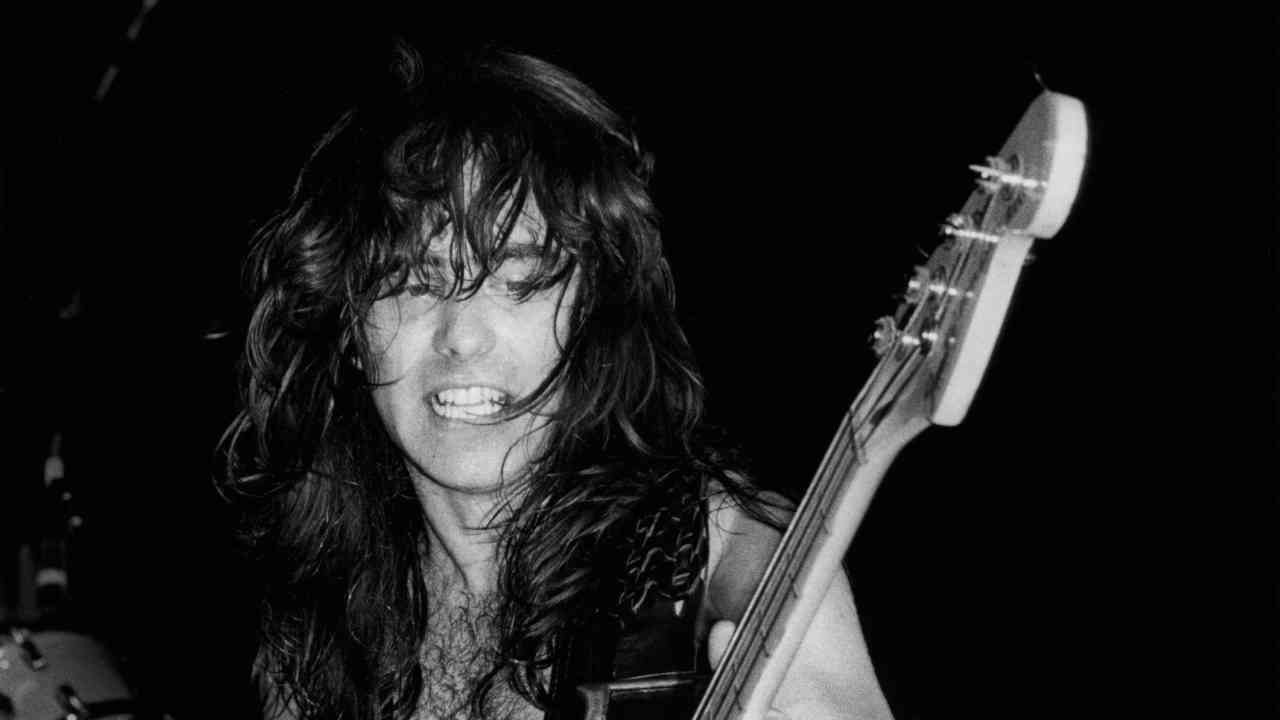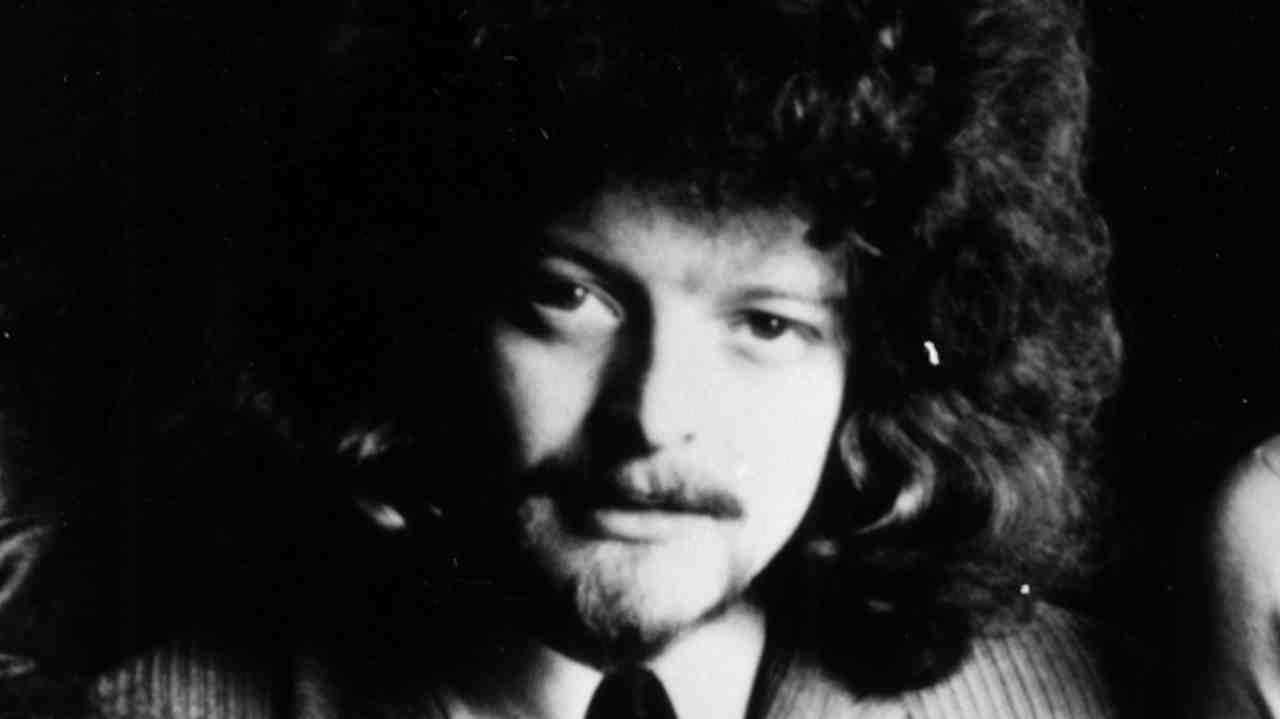“Steve invited me round to his nan’s house to jam”: the story of Steve Harris’s pre-Iron Maiden bands Gypsy’s Kiss and Smiler and the birth of a legend
How future Iron Maiden founder Steve Harris went from trainee draughtsman to superstar in waiting, as remembered by the people who knew him

In November 1973, future Iron Maiden bassist Steve Harris was a 17-year-old trainee draughtsman whose dreams of becoming a professional footballer had been elbowed aside by a burgeoning interest in rock music. With the sort of single-mindedness that would define him, he bought a bass, jacked in his job and joined his first band – the first step in a career that’s still going strong more than 40 years later.

Bob Verschoyle (vocalist, Gypsy’s Kiss): I met Steve when I was twelve and he was ten. He lived on Beaumont Road Estate in Leyton and I lived nearby. Steve loved football, so I used to go over after school and at weekends for a kick about. Every Sunday afternoon, someone would bring a radio and we’d listen to Pick Of The Pops with Alan ‘Fluff’ Freeman, to hear who was the new number one. As we got older we got less into pop and more into rock. Steve was a big Genesis fan, and I was into Emerson, Lake And Palmer. I used to get a slating from Steve because he was strictly a guitar man; didn’t like the organ.
Steve Harris: We used to muck about in my house. I used to have a couple of guys comin’ over from school, just sort of messin’ about.
Bob Verschoyle: After Steve’s mum and dad split up, he moved in with his nan, Ada, in Steele Road. Steve knew a guy from school, Dave Smith, who could play guitar, so he came round, and Steve got a bass. The difference between the rest of us and Steve was dedication. He’d be playing bass all the time. He became a trainee draughtsman, but he gave that up to concentrate on playing. His whole life was like that. Anything he did, he went at it one hundred per cent. He was the Subbuteo king, because he hated losing, so he just played and played. And the same with football or the bass. Dave knew another guitarist, Roy Middleton, who knew a drummer, Paul Sears.
Paul Sears: We met Steve and Dave at The Cart and Horses, one Friday night in April 1974, and then Steve invited us round to his nan’s for a jam the next day. I set my kit up and we had a bit of a blast. Ada had a run-in with one of the neighbours one time, and the air went blue. I had no idea sweet old ladies knew words like that. She just told him where to go. “You fuck off,” she said. “These fuckn’ boys are gonna be famous.” She was amazing, such a cool old lady, and a huge influence on Steve.
Bob Verschoyle: I couldn’t really play anything, so I used to help set the gear up. Steve wasn’t writing songs yet, so they started with covers, Blowing Free by Wishbone Ash, Paranoid, Smoke On The Water, All Right Now… and Southern Man by Neil Young. One day Dave couldn’t sing, so they tried doing everything as instrumentals. But it wasn’t working, so I offered to help because I knew all the words. Steve said: “Bloody ’ell, you can sing!”, so I became the vocalist. Steve had to be the boss. I used to wind him up because my vocals would be slightly out of time, so he’d stop and have a go at me. Then, once I got it right, he was fine.
Bob Verschoyle: Dave had started writing songs, one of which was called Influence, but it was pretty basic, more like punk than rock to me. He wrote another one called Heat Crazed Vole – such a horrendous title it used to make us laugh.
Sign up below to get the latest from Classic Rock, plus exclusive special offers, direct to your inbox!
Paul Sears: To get the sound Steve wanted, we needed a second guitarist. So I suggested a guy I’d played with called Tim Nash (aka Tim Wotsit). Excellent guitarist, very affable, no ego, so he came in and it worked. The sound, particularly during the solos where Tim would do hard-hitting strummed chords, flowed better. So that was the original five-piece Influence. The only gig we did under that name was the talent competition in St Nick’s Hall in Aberfeldy Street, Poplar in July of 1974.
Dave Beazley (aka Dave Lights, future Iron Maiden lighting engineer): I promoted Steve Harris’s first gig. There was a Battle Of The Bands competition in our local church hall and that was the first time I met Steve.
Paul Sears: It was Steve’s first-ever public performance. He’d never been on stage in his life, and he was so nervous. The place was packed, and it was being judged by The Who’s management – Kit Lambert and Chris Stamp – who were friends of the vicar. We opened with Influence, which was fine, but our second song, What Went Wrong, was supposed to start with Steve’s bass intro but it got fuddled. I was supposed to take my cue from Steve and bring the rest of the band in, but that cue never came. But we recovered and finished off with Heat Crazed Vole.
Dave Beazley: It was a good band. I wouldn’t say that it was as good as Iron Maiden, cos it was different. Steve was learning to play bass, trying to find his style.
Paul Sears: Lambert and Stamp were very nice to us. They said that with three original tracks in that style, there was a good chance we could succeed, but we didn’t win.
Bob Verschoyle: The band that won was called Flame, but they were all dressed in like a uniform, just a pop band really.
Paul Sears: Soon after, we decided on a name change because single word names – Pentangle, Cream – were a bit late sixties, and two words – Uriah Heep, Deep Purple – now felt more contemporary. So I was sitting in the pub one night when this old boy stood up to go to the toilet and said: “I’m gonna have a gypsy’s kiss, then I’m off home.” I’d never heard that before, so I suggested it and the band all loved it.
Bob Verschoyle: We built the set up gradually to about ten songs, mostly covers, a Chuck Berry, a Beatles number – I Am The Walrus – and those two of Dave’s, but Steve was still very nervous. Before gigs he’d be in the toilet and you’d have to drag him out. “Come on, Steve. We’re on in a minute.”
Paul Sears: We lasted about ten gigs, in all.
Bob Verschoyle: Steve was always phoning me up for rehearsals when I’d planned something else, so in the end, I just wasn’t prepared to drop everything whenever Steve wanted. He wasn’t working, so it didn’t matter to him. So at one rehearsal I just told him I was leaving.
Paul Sears: We didn’t survive long after Bob left. We knew it was going downhill, and Tim and Steve didn’t get along on a personal level. By the end it was just me and Steve until one day he answered an ad in Melody Maker, placed by two brothers, Mick and Tony Clee, looking to form a band, called Smiler.
Steve Harris: I was seventeen or eighteen. All the others were twenty-six or twenty-seven. I thought it was great because they had much more experience than me. So, of course, I thought I was going to learn lots of stuff, which I did. We used to play mostly blues and rhythm’n’blues. We used to cover Savoy Brown, Fleetwood Mac, Peter Green.
Paul Sears: I didn’t stay with them beyond the rehearsal stage. I’d been on the road for five years and I was beginning to think it wasn’t going to happen for me. It was time to get myself a proper job. I left. They brought in [future Iron Maiden drummer] Doug Sampson to replace me, and [future Maiden singer] Dennis Wilcock on vocals.
Steve Harris: When I started writing my own stuff, it was with a lot of combinations and time changes and power. I wanted to do my first real song with Smiler, but when I brought it to them, they said: “Oh shit, this has too many time changes. We’re not bloody doing this!” I couldn’t handle that attitude, so I left and formed Iron Maiden.
Johnny is a music journalist, author and archivist of forty years experience. In the UK alone, he has written for Smash Hits, Q, Mojo, The Sunday Times, Radio Times, Classic Rock, HiFi News and more. His website Musicdayz is the world’s largest archive of fully searchable chronologically-organised rock music facts, often enhanced by features about those facts. He has interviewed three of the four Beatles, all of Abba and been nursed through a bad attack of food poisoning on a tour bus in South America by Robert Smith of The Cure.

